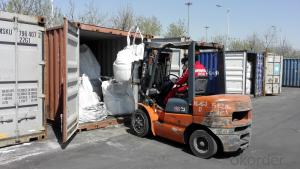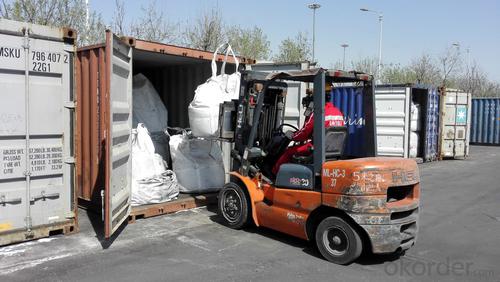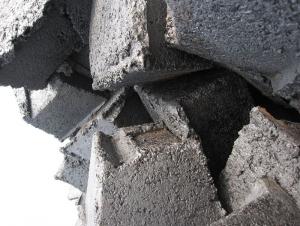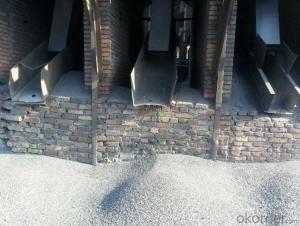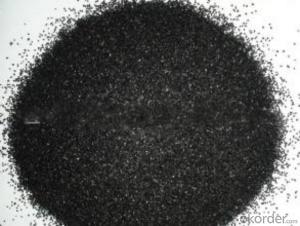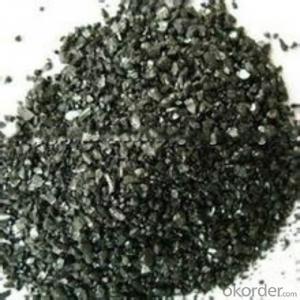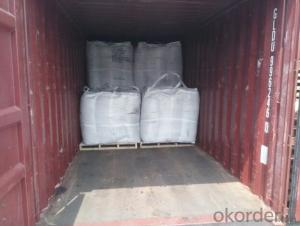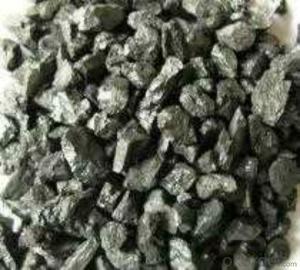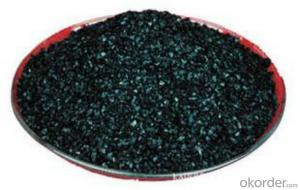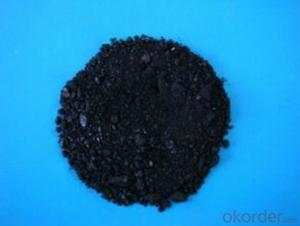Gas Calciend anthracite used as charging coke
- Loading Port:
- Tianjin
- Payment Terms:
- TT OR LC
- Min Order Qty:
- 20.9
- Supply Capability:
- 1009 m.t./month
OKorder Service Pledge
OKorder Financial Service
You Might Also Like
Introduction:
Calcined anthracite can be called carbon additive, carbon raiser, recarburizer, injection coke, charging coke, gas calcined anthracite.It is playing more and more important role in the industry
Best quality Anthracite as raw materials through high temperature calcined at over 2000℃ by the DC electric calciner with results in eliminating the moisture and volatile matter from Anthracite efficiently, improving the density and the electric conductivity and strengthening the mechanical strength and anti-oxidation. It has good characteristics with low ash, low resistivity, low sulphur, high carbon and high density. It is the best material for high quality carbon products. It is used as carbon additive in steel industry or fuel.
Features:
G-High Calcined Anthracite is produced when Anthracite is calcined under the temperature of 1240°C in vertical shaft furnaces. G-High Calcined Anthracite is mainly used in electric steel ovens, water filtering, rust removal in shipbuilding and production of carbon material.We are proud to work with customers around the world
Specifications:
F.C.% | 95MIN | 94MIN | 93MIN | 92MIN | 90MIN | 85MIN | 84MIN |
ASH % | 4MAX | 5MAX | 6 MAX | 6.5MAX | 8.5MAX | 12MAX | 13MAX |
V.M.% | 1 MAX | 1MAX | 1.0MAX | 1.5MAX | 1.5MAX | 3 MAX | 3 MAX |
SULFUR % | 0.3MAX | 0.3MAX | 0.3MAX | 0.35MAX | 0.35MAX | 0.5MAX | 0.5MAX |
MOISTURE % | 0.5MAX | 0.5MAX | 0.5MAX | 0.5MAX | 0.5MAX | 1MAX | 1MAX |
Pictures
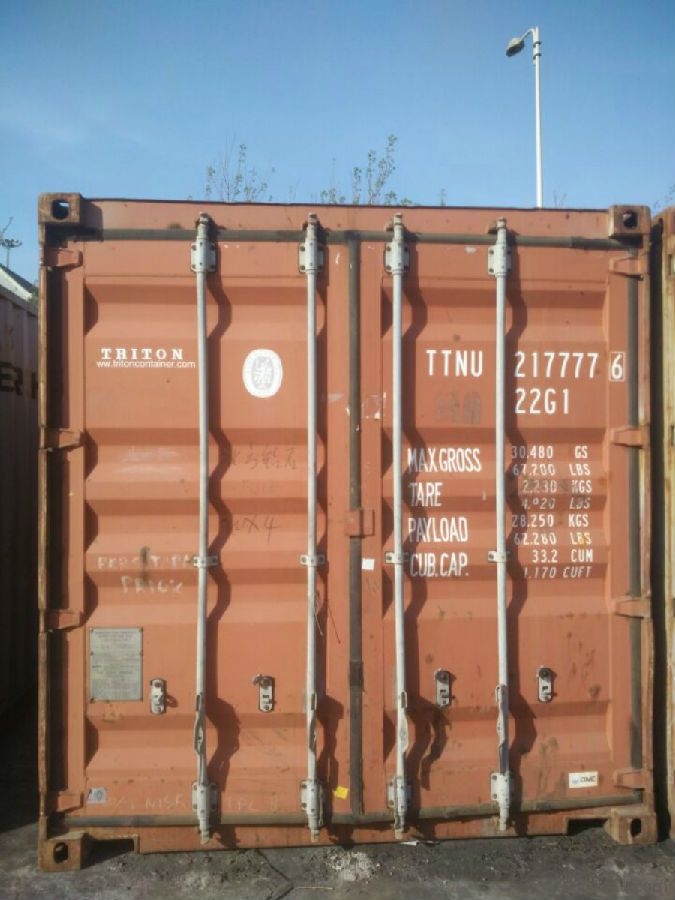
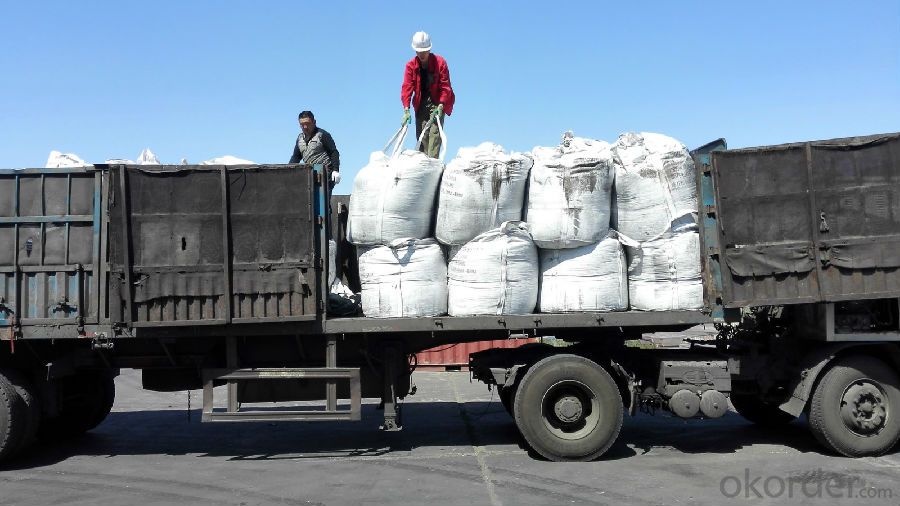
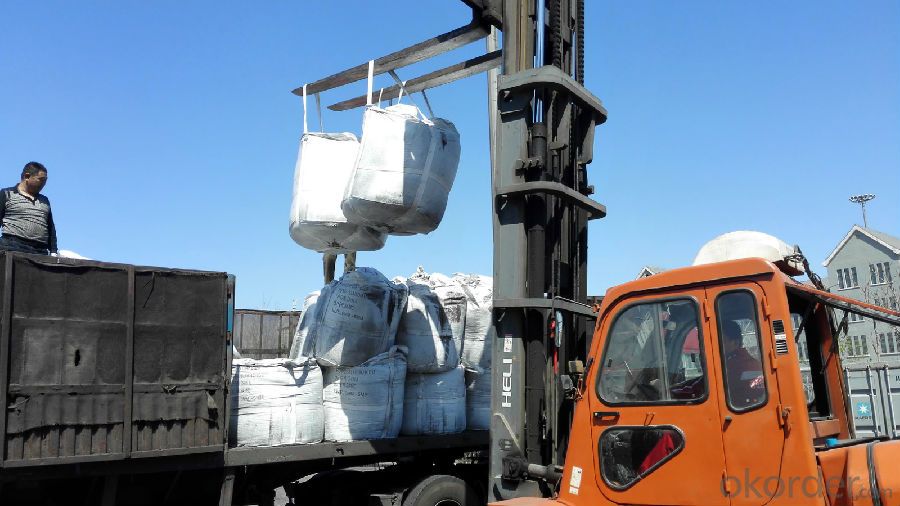
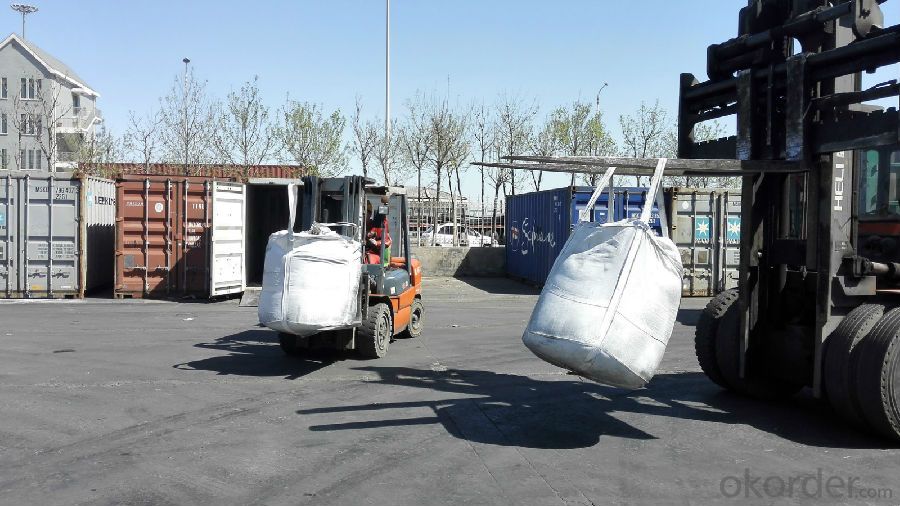
FAQ:
Packing:
(1). Waterproof jumbo bags: 800kgs~1100kgs/ bag according to different grain sizes;
(2). Waterproof PP woven bags / Paper bags: 5kg / 7.5kg / 12.5kg / 20kg / 25kg / 30kg / 50kg small bags;
(3). Small bags into jumbo bags: waterproof PP woven bags / paper bags in 800kg ~1100kg jumbo bags.
Payment terms
20% down payment and 80% against copy of B/L.
Workable LC at sight,
- Q: What are the impacts of carbon emissions on the stability of mountains?
- Carbon emissions can have various impacts on the stability of mountains. One significant effect is the acceleration of glacial melting, leading to increased water runoff and the potential for more frequent and severe landslides. Additionally, carbon dioxide contributes to the acidification of rainwater, which can corrode rocks and weaken the stability of mountain slopes. Climate change, driven by carbon emissions, also leads to alterations in precipitation patterns, temperature, and weather events, increasing the risk of erosion, rockfalls, and avalanches. Overall, carbon emissions have a detrimental influence on the stability of mountains, posing risks to both human populations and ecosystems.
- Q: What are the different allotropes of carbon?
- The different allotropes of carbon include diamond, graphite, graphene, carbon nanotubes, and fullerenes.
- Q: What is the chemical symbol for carbon?
- The chemical symbol for carbon is C.
- Q: How does carbon impact air quality?
- Carbon can have a significant impact on air quality through the release of carbon dioxide (CO2) and other carbon-based pollutants into the atmosphere. The burning of fossil fuels, such as coal, oil, and natural gas, releases large amounts of carbon dioxide, which is a greenhouse gas responsible for climate change. Increased levels of carbon dioxide in the atmosphere contribute to the warming of the Earth's surface, leading to adverse effects on air quality. Furthermore, carbon-based pollutants, including carbon monoxide (CO) and volatile organic compounds (VOCs), can be emitted during the incomplete combustion of fossil fuels or other organic materials. These pollutants have harmful effects on human health and can contribute to the formation of ground-level ozone, a major component of smog. Ozone can cause respiratory problems, lung damage, and worsen existing respiratory conditions such as asthma. Additionally, carbon particles, known as black carbon or soot, are released from the burning of fossil fuels, biomass, and other organic matter. These particles can directly impact air quality by absorbing sunlight and reducing visibility. Moreover, when these particles are inhaled, they can penetrate deep into the lungs, causing respiratory issues and potentially leading to long-term health problems. Reducing carbon emissions is crucial for improving air quality and mitigating the negative impacts on human health and the environment. Transitioning to cleaner and more sustainable energy sources, such as renewable energy, can help reduce carbon emissions and improve air quality. Implementing stricter regulations and emission standards for industries and vehicles can also contribute to reducing carbon pollution and improving overall air quality.
- Q: How is carbon used in the production of batteries?
- Carbon is an essential component in the production of batteries due to its unique properties. It is commonly used as an electrode material in both primary (non-rechargeable) and secondary (rechargeable) batteries. In primary batteries, carbon is used as a cathode material. It acts as a host for the chemical reactions that occur during the discharge process, enabling the flow of electrons. Carbon's high conductivity is crucial in ensuring efficient electron transfer, allowing the battery to deliver power effectively. Additionally, carbon's stability and low reactivity make it an ideal material for long-lasting primary batteries. In secondary batteries, such as lithium-ion batteries, carbon is utilized in both the anode and cathode. The anode consists of graphite, a form of carbon that can intercalate lithium ions during charging and release them during discharging. This process allows for the reversible storage and release of energy, making graphite an excellent choice for the anode material. Carbon is also used in the cathode of secondary batteries, where it enhances the overall performance. Carbon-based materials, like carbon black, are added to the cathode to improve its electrical conductivity and increase the surface area available for reactions. This leads to higher energy and power densities, improving the battery's overall performance. Furthermore, carbon additives, such as carbon nanotubes or graphene, are being explored to enhance battery performance further. These carbon-based materials have unique properties like high surface area, high electrical conductivity, and mechanical strength, which can potentially improve the energy storage capacity and lifespan of batteries. In summary, carbon plays a vital role in battery production by enabling efficient electron transfer, storage, and release of energy. Its conductivity, stability, and ability to intercalate ions make it an essential component in both primary and secondary batteries, contributing to the advancement of energy storage technology.
- Q: Now the furnace rock carbon early deleted, more than +10, he wants advanced I can't do ah
- High-grade furnace rock carbon is in the previous time, Tencent limited, only the mall can buy! Now, the mall is off the shelf! It's already gone! Thank you!
- Q: How does carbon affect the formation of landslides?
- Carbon does not directly affect the formation of landslides. Landslides are primarily triggered by natural factors such as heavy rainfall, earthquakes, or volcanic activity, or by human activities such as deforestation or construction. However, carbon indirectly plays a role in landslides through its impact on the environment. Excessive carbon dioxide (CO2) emissions, primarily caused by human activities such as burning fossil fuels and deforestation, contribute to climate change. Climate change leads to more frequent and intense rainfall events, which can increase the likelihood of landslides. Increased rainfall can saturate the soil, making it heavier and more prone to sliding, especially on steep slopes. Another way carbon can indirectly affect landslides is through deforestation. Trees play a crucial role in stabilizing slopes by anchoring the soil with their root systems. When forests are cleared for agriculture, urbanization, or logging, the loss of tree cover weakens the soil's stability and increases the risk of landslides. Additionally, the removal of vegetation reduces the absorption of rainfall, leading to increased surface runoff and erosion, further destabilizing slopes and making them more susceptible to landslides. In conclusion, while carbon itself does not directly cause landslides, its impact on climate change and deforestation can indirectly contribute to the occurrence and severity of landslides. It is important to address carbon emissions and promote sustainable land management practices to mitigate the risk of landslides and maintain the stability of slopes.
- Q: How does carbon impact the stability of tundra ecosystems?
- Carbon impacts the stability of tundra ecosystems in several ways. Firstly, carbon plays a crucial role in the formation and development of tundra soils. As plants in the tundra grow and photosynthesize, they absorb carbon dioxide from the atmosphere and convert it into organic matter through photosynthesis. This organic matter eventually decomposes and adds carbon to the soil, forming a layer of organic-rich permafrost that helps stabilize the ecosystem. Additionally, carbon in the form of vegetation acts as a protective layer against erosion in tundra ecosystems. The dense vegetation cover, composed of mosses, lichens, and shrubs, helps to hold the soil in place and prevents it from being washed away by wind or water. This stabilization is essential in the tundra, where the cold temperatures and short growing seasons limit plant growth and soil development. Furthermore, the stability of tundra ecosystems is influenced by the release of carbon dioxide and methane, which are greenhouse gases, from the melting permafrost. As global temperatures rise, the permafrost thaws, releasing stored carbon into the atmosphere. This process creates a positive feedback loop, as the released carbon contributes to further warming, which in turn accelerates permafrost thawing. This feedback loop has the potential to destabilize tundra ecosystems by altering the balance of plant and animal life, disrupting nutrient cycling, and increasing the risk of wildfires. Overall, carbon plays a vital role in maintaining the stability of tundra ecosystems through the formation of soils, erosion control, and the regulation of greenhouse gas emissions. Understanding and managing carbon dynamics in the tundra is crucial for preserving these unique and fragile ecosystems in the face of climate change.
- Q: What is carbon pricing?
- Carbon pricing is a market-based strategy aimed at reducing greenhouse gas emissions by putting a price on carbon dioxide and other greenhouse gases. It involves either implementing a tax on carbon emissions or establishing a cap-and-trade system where companies are allotted a certain amount of emissions permits that can be bought and sold. The goal is to create financial incentives for industries to reduce their emissions and transition to cleaner and more sustainable practices.
- Q: The difference between double offset paper and carbon free printing paper
- The use of the two is entirely different.Double offset paper is a printing paper. It is a higher quality printing paper. The contrast, flexibility and surface strength have higher requirements, and the acidity and basicity of the paper should be close to neutral or weak alkaline.Double gummed paper refers to printing paper, also called offset paper. Culture, printing paper paper one of the typical representative, in the business of two-sided offset paper (two-sided offset paper) commodity name, the old road / Taiwan area with a ream of paper, also called die rough paper.Carbon free copy is just typing paper and coating. Paint is divided into two kinds, one kind of colored, one kind of colorless.
Send your message to us
Gas Calciend anthracite used as charging coke
- Loading Port:
- Tianjin
- Payment Terms:
- TT OR LC
- Min Order Qty:
- 20.9
- Supply Capability:
- 1009 m.t./month
OKorder Service Pledge
OKorder Financial Service
Similar products
Hot products
Hot Searches
